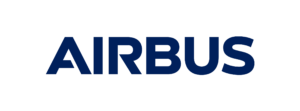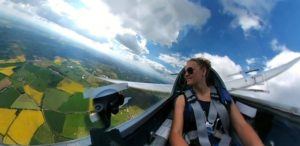Profile
Harriet Gamble
Curriculum Vitae
-
Education:
Cowplain Community School, Havant College, University of Bath
-
Qualifications:
GCSEs, A-level in Maths, Further Math, Physics & Electronics, Masters Degree in Aerospace Engineering
-
Work History:
Shop Assistant, Machine Operator, University Ambassador
-
Current Job:
Satellite Payload Systems Engineer
-
Employer:

-
About Me
I have always been really interested in outer space and learning how things work so went to the University of Bath to study Aerospace Engineering and graduated two years ago, I’ve been working at Airbus designing satellites since.
-
Read more
In my spare time I like to be outside as much as possible. Most weekends I go gliding (it’s like a plane without an engine) it is an amazing feeling to soar like a bird through the sky, gliders can travel for hundreds of kilometres so there is always something new to see. I started gliding when I joined university but you can actually fly solo from 14 years old. I also enjoy camping and horse riding or just curling up with a good book.

-
My pronouns are
she/her
-
My Work
I design satellites which collect information about the Earth. These satellites range from about the size of a suitcase up to the size of a double decker bus and can tell us all about the environment.
-
Read more
These satellites can help us to understand how the planet is changing; from the shrinking rainforests, to how the polar ice caps are melting and which volcanoes might erupt next. All this information is very important and is called Earth Observation, one of the best ways to collect all this data is from way up in space.
To collect data each satellite has a payload; which could be something like a camera or a sensor. I help to design these payloads. As some of these payloads are really big, like huge antennas, I get to design how they can be folded up and packed down smaller so we can fit them on rockets and get them into space. Normally each satellite is a new design, because they can have so many different purposes, so there is always a new design challenge to tackle. This kind of work involves Maths and Science but also needs some creativity and imagination. At Airbus we make satellites for customers all over the world including the European Space Agency (ESA).
A lot of the payloads I work on use Synthetic Aperture Radar technology (SAR). Most observation satellites use a camera to gather data but SAR is where the satellite has a large antenna which sends microwave pulses towards Earth and then receives the reflected signals back to make an image. It might sound strange but it is not really that different to a camera. With a camera the sun sends out light which is reflected off the ground and bounces into the camera lens to create an image. The benefit of SAR is it can take images through clouds and can also work in complete darkness because it doesn’t rely on light from the sun. This means it can be used for lots of special tasks such as providing images during natural disasters where hurricane weather or volcanic dust might block the view. This way governments and aid providers know where to evacuate people from or where to help first. Another key use is for monitoring polar ice caps as SAR provides extra data which can show how thick the ice is or looking at rainforests it helps to work out how dense and healthy forests are.
I am currently working on a project for the European Space Agency (ESA) where we are designing a new satellite to join the Copernicus Program. This is a mission will provide loads of data to help Europe understand climate change, how we are affecting it but also look at things like land use for farming to help work out when it is best to sow seeds, collect crop etc. so we can grow more food and help stop global hunger. You can find out more about the Copernicus Program here: https://www.copernicus.eu/en/about-copernicus/
Here are two of the other projects I have worked on:
NovaSAR: https://www.bbc.co.uk/news/science-environment-46312874

Zephyr: https://www.youtube.com/watch?v=aSPn1Rqr9jg

-
My Typical Day: I normally start work between 7.30 and 8am and finish early at 4pm. My days are quite varied, I get to do design work, technical calculations as well as building and testing new technology designs. Normally I am based in Portsmouth working in an office, laboratory or clean room but my work involves lots of other teams and companies so I also get to travel.
-
Read more
When I first get to work I check my emails, grab a cup of tea and work out a to-do list for the day to make sure I keep on track with all my tasks.
What I do next depends on the stage of the project I am currently working on.
– When we first start projects there is loads of research and documentation so I am at my desk most of the time looking on the internet, through old project reports or talking to colleagues who have worked on similar missions before.
– When I am doing design work I use CAD (computer aided design) tools to design and draw the payload. Sometimes we visit other companies who we might be working with.
– Often there are calculations to do which work out how heavy the satellite will be, what temperatures it could work in (temperature of +100⁰C to -100⁰C are quite common in space) and if it is strong enough to survive a rocket launch. This normally involves a team to get all this work done and we will adjust the design if needed.
– Some days I spend time in a clean room (like a laboratory which makes sure no dust or particles get on things) where we can build and assemble test pieces or even parts to go into space. This is often delicate work.
In between doing all these things on a few different projects, there are meetings with the customer, which sometimes means I get to travel to other countries, and documents to write up so I am always pretty busy!
-
What I'd do with the money
I really enjoy visiting schools and colleges and I would love to be able to bring my glider to along to teach about aerospace, flying and engineering. Hopefully I can show that anyone can learn to fly or work in the aerospace industry and inspire some more people to dream big!
-
Read more
I love to share how amazing the aerospace industry is and gliding is a really accessible way to get into it. There are lots of scholarships, you can fly solo at 14 years old and it is a great way to learn more about engineering and STEM subjects in general. Having a glider on site would be a brilliant interactive way show people how wings work, the controls, what materials we use and how we use energy to keep flying without an engine. The prize money would help to cover the transport costs and would allow me to visit more schools and colleges across the country.
-
My Interview
-
How would you describe yourself in 3 words?
Inventive, Enthusiastic, Adventurous
What's the best thing you've done in your career?
Working on a satellite which is now up in space
What or who inspired you to follow your career?
My Dad, who is also an engineer
What was your favourite subject at school?
Design & Technology
What did you want to be after you left school?
An Astronaut (I'd still love to do this!)
Were you ever in trouble at school?
Only for daydreaming
Who is your favourite singer or band?
The Eagles
What's your favourite food?
Cake!
What is the most fun thing you've done?
Flying a glider solo for the first time and skydiving
-
